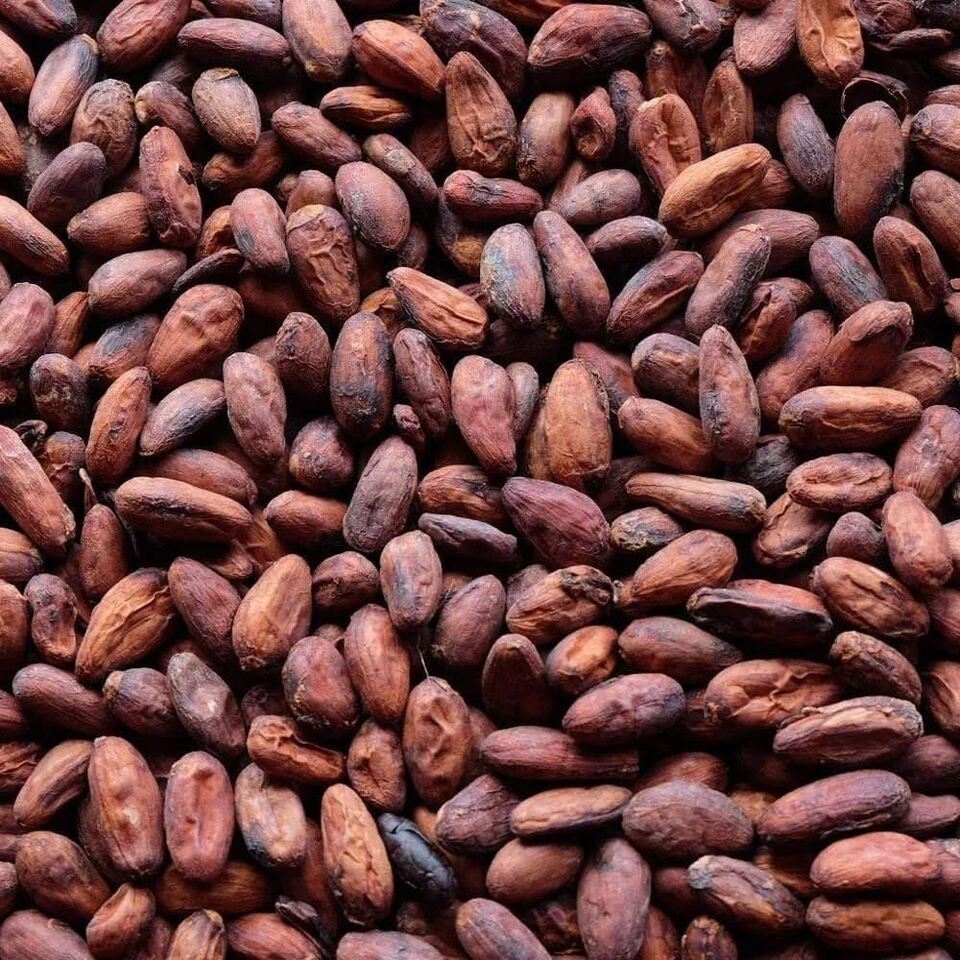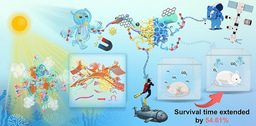Deconstructing the Bean: Unveiling the Landscape of Cocoa Research in Africa and Shaping its Future
Published in Earth & Environment, Research Data, and Sustainability

The Significance of Cocoa Research: A Contextual Backdrop
Cocoa, the essential ingredient of the global chocolate industry, represents a cornerstone crop for numerous African nations, supporting the livelihoods of millions of smallholder farmers across the continent. However, the African cocoa sector grapples with a multitude of interconnected challenges that threaten its long-term sustainability. These challenges include the escalating impacts of climate change, manifested in shifting weather patterns, intensified drought conditions, and rising temperatures that jeopardize yields and farmer incomes. We also witness the relentless pressure of pests and diseases, such as black pod rot and cocoa swollen shoot virus, that continue to inflict devastating economic losses on cocoa farms. Furthermore, the aging of cocoa farms, coupled with an aging farmer population, poses a significant challenge to the adoption of modern farming techniques and overall productivity. Market volatility, with its inherent price fluctuations, further complicates the picture, directly affecting farmer incomes and the overall economic stability of cocoa-dependent communities. Finally, the persistent sustainability concerns surrounding deforestation, unsustainable farming practices, and instances of child labour highlight the urgent need for a comprehensive approach to cocoa production.
Recognizing the gravity of these issues, the need for robust and impactful research is paramount. Research is essential for developing effective, sustainable solutions to these multifaceted challenges and ensuring the long-term viability and prosperity of the African cocoa sector. By understanding the current state of cocoa research, identifying critical gaps in knowledge, and fostering enhanced collaboration across disciplines and stakeholders, we can take significant steps toward a more sustainable and equitable future for cocoa farming communities.
Methodology: Harnessing the Power of Scientometrics
The methodology adopted a rigorous and systematic approach to ensure the reliability and validity of our findings, employing the powerful tools of scientometrics. The process commenced with a meticulous data collection phase, where we sourced publications from leading academic databases, Scopus being a primary source, specifically targeting those articles and other publications directly relevant to cocoa research within the African context. The search strategy was carefully constructed, utilizing a comprehensive selection of keywords centred around “cocoa” (Theobroma cacao), “Africa”, and a suite of relevant research areas, such as genetics, agronomy, economics, and policy. This ensured a broad and inclusive capture of the pertinent literature.
Before any meaningful analysis could commence, the retrieved data underwent a critical pre-processing phase. This involved rigorous cleaning procedures, addressing inconsistencies, removing duplicates, and standardizing author names to maintain data integrity. This step was paramount for the accuracy and reliability of the subsequent quantitative analysis.
For the core scientometric analysis, we implemented a range of techniques to explore the research landscape. These techniques included: tracking publication counts over time to identify trends, employing keyword analysis to reveal the dominant themes within the research corpus, evaluating citation patterns to assess the impact of different research areas, conducting co-authorship analysis to map collaboration networks and institutional partnerships, and performing geographical analysis to determine the spatial distribution of research activities across the African continent. We utilized dedicated software packages for this task, including VOSviewer for network visualization and R Studio (Biblioshiny) for detailed statistical analysis and further exploration of trends.
To complement this, we also examined the production trends of cocoa beans in Africa, alongside trade dynamics, analyzing both global and regional imports and exports. These trade insights were gleaned from data sourced from the Observatory of Economic Complexity (OEC) and the Food and Agriculture Organization of the United Nations (FAOSTAT), utilizing datasets from 2022 and 2023, respectively, for a current perspective on the cocoa trade landscape.
Key Findings: Insights into Opportunities and Challenges
The analysis of cocoa research in Africa revealed several critical insights, offering a clearer perspective on both the opportunities and the challenges facing the sector. First, the overall volume of cocoa-related publications has shown a significant and encouraging increase between 1957 and 2024, indicating a growing global awareness of the sector's importance. However, a disproportionate amount of this research has focused on enhancing cocoa production – particularly disease resistance, pest management, and yield improvements – potentially creating an imbalance in research priorities. While this focus is understandable given the financial implications of crop losses, the findings suggest a critical need for increased attention on other pressing issues.
Specifically, climate change research remains significantly underrepresented, despite the clear threat posed to cocoa production in Africa. Further investment in this area is essential to develop climate-resilient varieties and sustainable farming practices. Moreover, value chain development, vital for increasing farmer incomes and creating local jobs, also requires greater research attention. Similarly, farmer livelihoods, poverty reduction strategies, and the broader socioeconomic dimensions of cocoa farming have received comparatively less attention than the technical aspects of production, which is a concern given the vital role of these farmers in ensuring the sector's sustainability.
Analysis of collaboration networks revealed robust partnerships between African institutions and international entities, particularly in Europe and North America. While these collaborations are valuable, it is crucial to also prioritize strengthening local research capacity within African institutions. Furthermore, research activities tend to be concentrated in a few key cocoa-producing countries, highlighting the need to promote and support research initiatives in other cocoa-growing regions across the continent. While traditional production-focused research has dominated, the study observed an increasing interest in areas such as sustainable cocoa farming, organic cocoa production, and the application of biotechnology in cocoa improvement. Finally, trends indicate a substantial increase in both cocoa bean and cocoa product trade, suggesting a positive outlook for the sector, particularly for sustainable and high-quality cocoa products that meet evolving consumer demands.
Discussion and Call to Action: Shaping the Future Together
Based on the analysis of this study, a roadmap for future research is critical to achieving a sustainable and equitable cocoa sector in Africa. Paramount among these priorities is climate change adaptation. The findings reveal a significant gap in current research addressing this crucial threat. Consequently, future studies should concentrate on developing climate-resilient cocoa varieties, implementing sustainable water management techniques, combat pest and diseases, and formulating practical adaptation strategies directly applicable to farmers' needs and challenges.
Furthermore, investment in value chain development research is crucial for empowering local communities. The current focus inadequately addresses processing, marketing, and branding. Future research should explore innovative technologies, identify effective strategies for promoting African cocoa products, and investigate the potential of value-added byproducts to maximize economic benefits within the region.
Addressing farmer livelihoods is equally essential, as the study underscores a need for greater emphasis on socioeconomic factors. Therefore, future studies should prioritize the development of effective poverty reduction strategies, promote financial literacy programs tailored to cocoa farmers, and investigate the potential impact of robust social safety nets to buffer against economic shocks.
Promoting sustainability should be a central focus, directly addressing deforestation and unsustainable farming practices. Future research needs to rigorously assess the impacts of different farming systems, develop and promote beneficial agroforestry practices, and explore the implementation of reliable traceability and certification systems to ensure responsible cocoa production.
To move beyond the current reliance on international collaborations, strengthening local research capacity is imperative. This requires actively training African researchers, establishing dedicated local research centers, and fostering synergistic collaborations between African institutions to build sustainable, self-reliant research capabilities.
Finally, enhancing efficiency and maximizing impact require a concerted effort to develop harmonized data sharing and standardization protocols. This includes establishing a centralized cocoa research database, employing consistent methodologies across studies, and promoting open access to data and research findings. Encouraging interdisciplinary approaches is also essential for developing holistic solutions, fostering collaborations between diverse experts to address the interconnected environmental, social, and economic factors affecting the cocoa sector.
This study provides a valuable foundation for understanding the current state of cocoa research in Africa, but its true value lies in the actions that follow. I firmly believe that this community, collectively, is uniquely positioned to shape the future trajectory of cocoa research, moving it towards practical and impactful outcomes.
I wholeheartedly invite you to delve into the full article (https://doi.org/10.1007/s44279-025-00298-1) and share your valuable thoughts, perspectives, and suggestions. What specific research questions do you see as most pressing? While some may argue that the focus should remain primarily on increasing production yields, the study highlights the urgent need to also address the broader socioeconomic and environmental challenges facing the sector.
Let us work together to ensure that cocoa research in Africa remains relevant, impactful, and contributes to a sustainable and equitable future for the cocoa sector, benefitting not only the farmers but also the environment and the wider community. I eagerly anticipate a meaningful and productive discussion with all of you.
Sincerely,
Olutosin Ademola Otekunrin, PhD
Follow the Topic
-
Discover Agriculture

This journal covers basic science and applied research relating to the agricultural sector in areas such as crop and soil sciences, environmental science, and advances in relevant technologies.
What are SDG Topics?
An introduction to Sustainable Development Goals (SDGs) Topics and their role in highlighting sustainable development research.
Continue reading announcementRelated Collections
With Collections, you can get published faster and increase your visibility.
Biological control agents mediate plant microbiome for plant health and protection: A blow of air for sustainable agriculture
The global demand for reducing pesticide residues in agricultural produce has increased significantly. Biopesticides and biological control agents (BCAs) agents, when used strategically alongside conventional synthetic pesticides, offer an effective solution for managing agricultural pests while minimizing pesticide residues. Plant growth-promoting biocontrol agents (PGPBCAs) are characterized by three key traits: plant growth promotion, antagonism effects, and induced systemic resistance (ISR). These PGPBCAS employed direct and indirect mechanisams to fascilate plant health and physiology in challenging circumstances. Recently, plant-associated microorganisms have been coined as a second functional genome that exhibits significant variability in terms of diversity, abundance, structure, and function. Over the past two decades, it has been demonstrated that microbial resources play a significant role in attaining the objective of sustainable plant growth and more environmentally friendly treatments for plant diseases. However, at the same time, the biopesticides also encountered numerous challenges in field conditions. The desired function can be influenced by both abiotic factors and biotic , especially interactions with pathogens. A pressing necessity exists to comprehend and advance scientific understanding of the plant microbiome and its interaction with both abiotic and biotic factors. This can be achieved by employing complex molecular, biochemical, and metabolite signaling and response mechanisms to sustain plant growth, protection, and productivity for a continuously growing human population.
Keywords: Pesticide residue reduction; Biopesticides; Biological control agents (BCAs); Plant growth-promoting biocontrol agents (PGPBCAs); Antagonism effects; Induced systemic resistance (ISR); Plant microbiome; Microbial resources; Sustainable plant growth; Abiotic and biotic interactions; Molecular signaling; Plant disease management
This Collection supports and amplifies research related to SDG 2.
Publishing Model: Open Access
Deadline: Jun 01, 2026
Climate-smart Agriculture: Approaches and Practices
Climate-smart agriculture was first defined in 2010 by Food and Agriculture Organization (FAO) of the United Nations as “an approach that helps guide actions to transform agricultural production systems towards green and climate resilient practices.” It refers to a set of sustainable farming methods designed to enhance the productivity and resilience of agricultural production systems that have been affected by climate change. Climate-smart agriculture aims to simultaneously achieve the three outcomes of increased productivity, enhanced resilience, and reduced emissions. In the past decade, integrated, holistic approaches for managing cropland, livestock, forests, and fisheries have been developed by researchers and practiced by agricultural practitioners to sustain and increase crop productivity and yield, enhance resilience to environmental changes, and reduce greenhouse gas emissions.
Keywords: soil health, plant breeding, biochar, carbon sequestration, agrivoltaics, greenhouse gas emissions, climate change, sustainable agriculture
This Collection supports and amplifies research related to SDG 2, SDG 7, SDG 12, and SDG 13.
Publishing Model: Open Access
Deadline: Dec 31, 2025





Please sign in or register for FREE
If you are a registered user on Research Communities by Springer Nature, please sign in